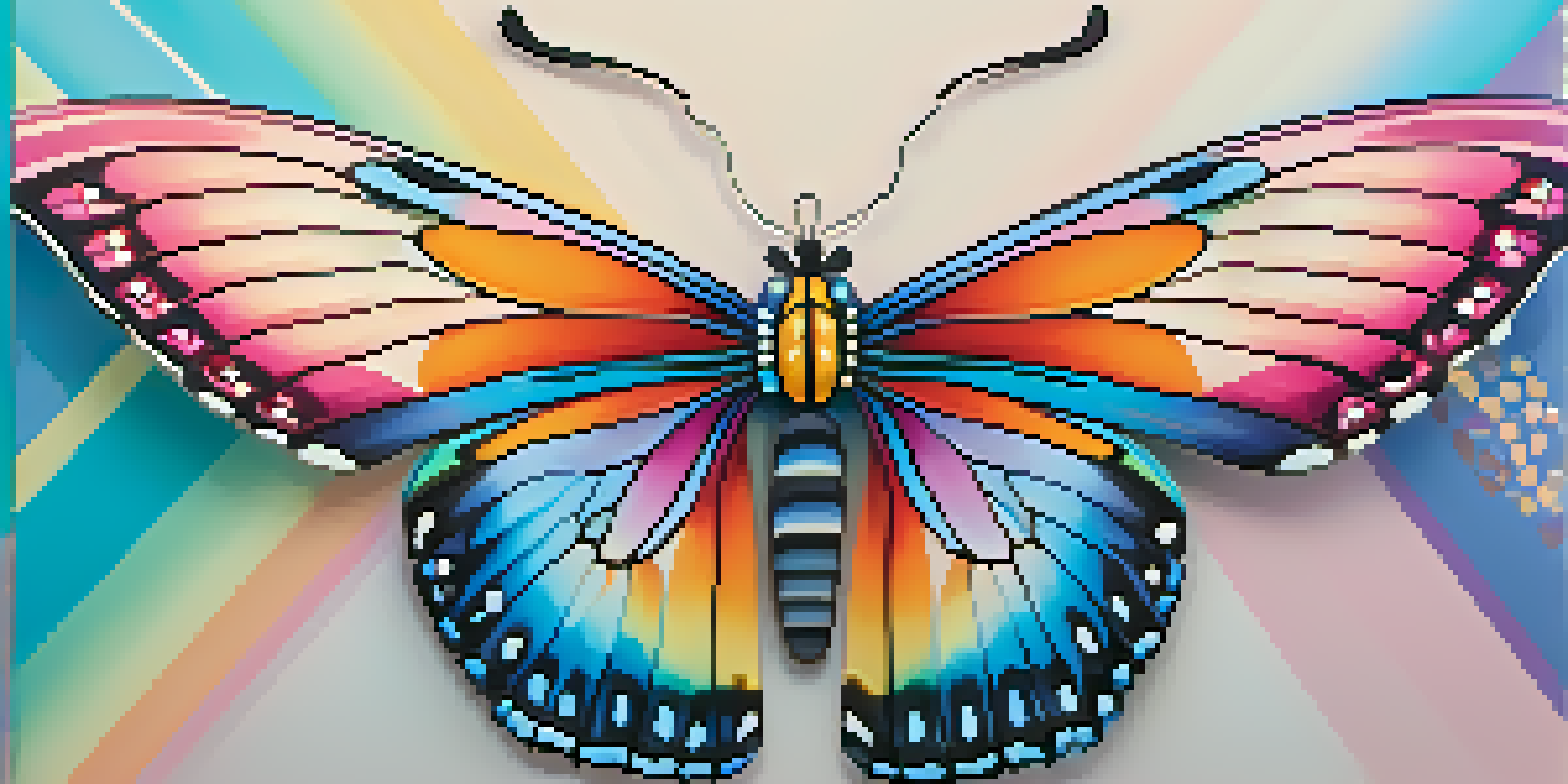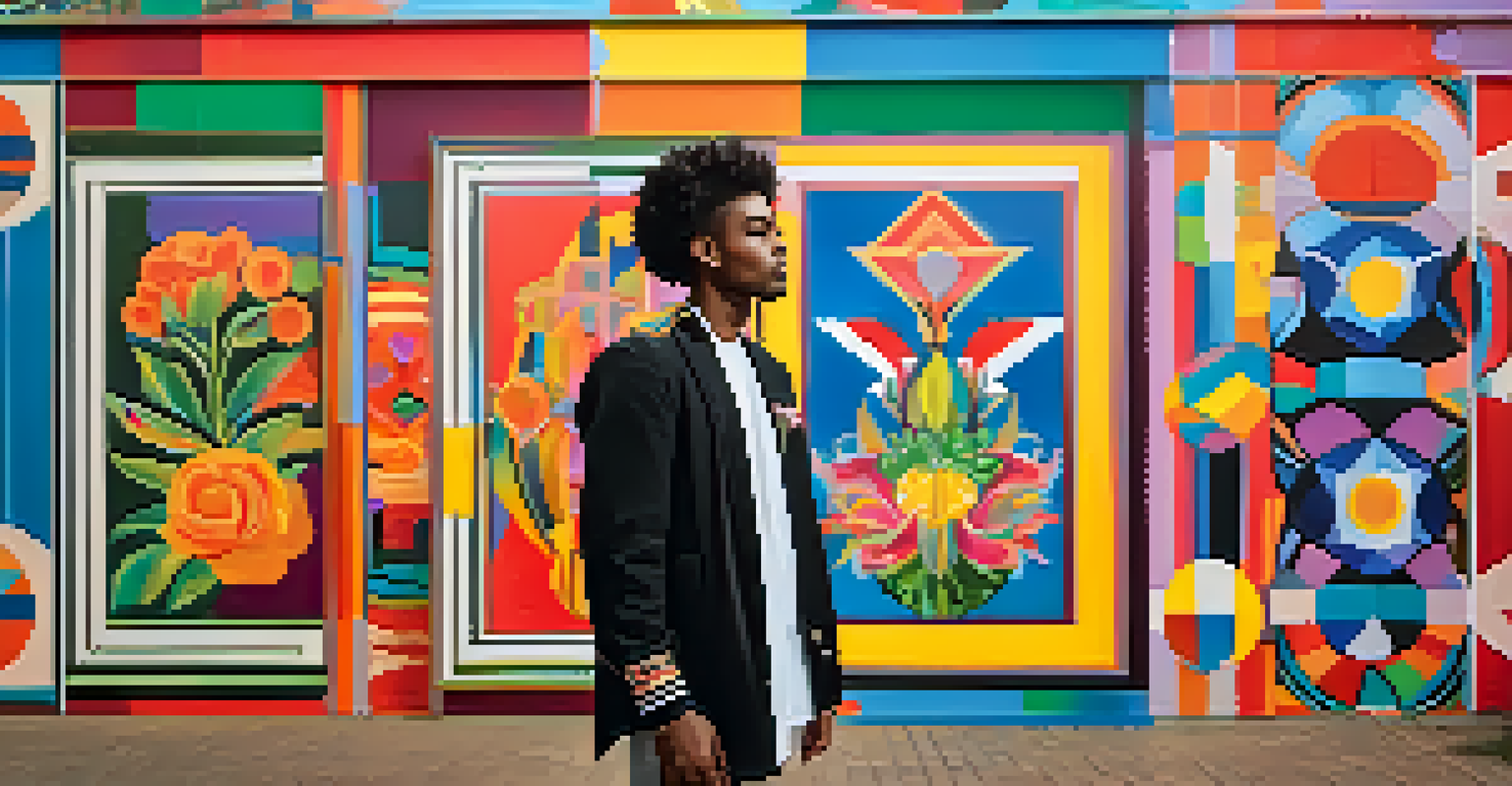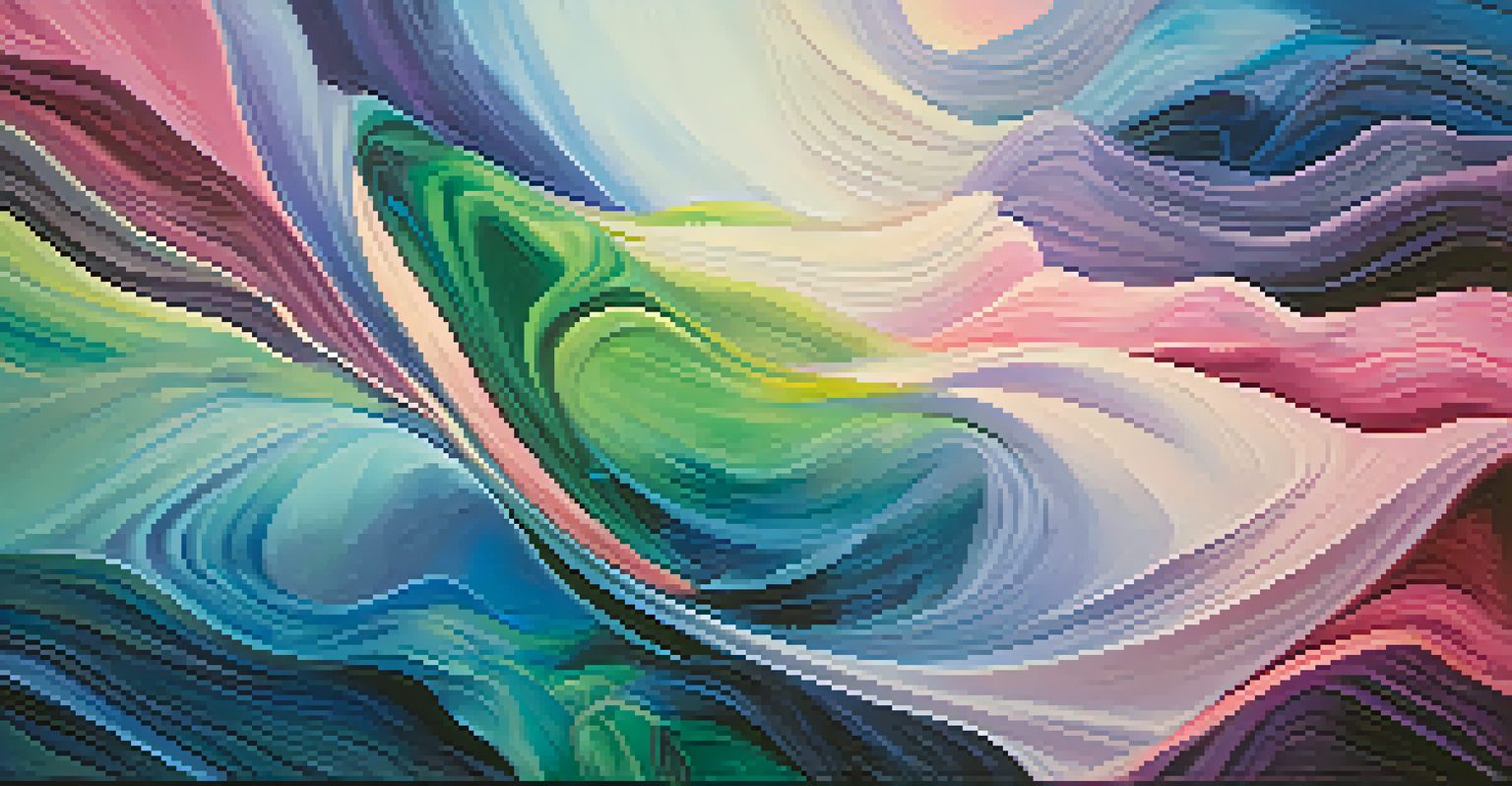The Use of Color and Symbolism in Gender Identity Art

Understanding Gender Identity and Its Artistic Expression
Gender identity is a deeply personal aspect of who we are, and art serves as a powerful medium for exploring it. Artists often use their work to express their own experiences and feelings about gender, creating pieces that resonate with others. This expression can take many forms, from painting and sculpture to performance and digital media, each allowing for a unique exploration of identity.
Art is the most beautiful of all lies; it is a reflection of reality, capturing the essence of our identities and emotions.
By conveying their journeys through art, these creators invite viewers into their worlds, fostering empathy and understanding. As audiences engage with these works, they often find reflections of their own struggles or triumphs regarding gender identity. This connection is vital in a society where discussions about gender can often be divisive or misunderstood.
Ultimately, gender identity art serves not only as a personal outlet for artists but also as a communal space for dialogue and acceptance. It paves the way for broader conversations about identity, encouraging both artists and viewers to rethink their perspectives on gender.
The Role of Color in Representing Gender Identity
Color plays a crucial role in conveying emotions and ideas, making it a powerful tool in gender identity art. Artists often choose specific colors to express their feelings about gender, using hues that resonate with their experiences. For example, the use of blue and pink has traditionally been associated with male and female identities, respectively, but many artists challenge this norm by using a broader palette.

By employing colors that defy traditional gender associations, artists can highlight the fluidity of identity and the spectrum of gender experiences. This shift encourages viewers to reconsider their preconceived notions about gender based on color. For instance, a vibrant rainbow can symbolize inclusivity and the diversity of gender identities, inviting everyone to find a place within it.
Art as Expression of Identity
Artists use their work to explore and express their personal experiences and feelings about gender identity.
Ultimately, color becomes a language of its own in gender identity art, communicating complex ideas and feelings that words sometimes cannot. As artists experiment with color usage, they open up new avenues for understanding gender and creating a more inclusive society.
Symbolism in Art: Beyond the Surface Meaning
Symbolism in art adds depth and layers of meaning, allowing creators to convey complex ideas about gender identity. Artists often use symbols that resonate personally or culturally, such as butterflies representing transformation or chains symbolizing oppression. These symbols invite viewers to engage with the artwork on a deeper level, prompting reflection on their own interpretations.
The role of an artist is to make people think, to open their eyes to new perspectives and challenge the status quo.
For example, an artist might incorporate a flower to signify growth and resilience in the journey of self-discovery. By utilizing recognizable symbols, artists can create connections between their personal narratives and broader societal issues. This can inspire viewers to consider the experiences of others and the shared struggles within the LGBTQ+ community.
In this way, symbolism not only enriches the artwork but also serves as a bridge between the artist and the audience. It encourages conversations about identity, acceptance, and the ongoing journey toward understanding one's true self.
Cultural Influences on Color and Symbolism in Art
Culture significantly shapes the use of color and symbolism in gender identity art, as different societies have varying associations and meanings. For instance, the color red may symbolize passion and strength in one culture, while in another, it might represent danger or caution. Artists draw upon their cultural backgrounds to inform their choices, creating works that are rich in context.
These cultural nuances provide a deeper understanding of how gender identity is perceived globally. Artists who draw from their heritage can challenge stereotypes and expand the conversation around gender. By incorporating elements from their cultures, they create a tapestry of experiences that highlights both individuality and shared humanity.
Color and Symbolism in Art
Colors and symbols in gender identity art communicate complex emotions and challenge traditional gender norms.
As art continues to evolve, the intersection of culture, color, and symbolism remains crucial. This interplay allows for a dynamic exploration of gender, inviting viewers to appreciate the diverse ways identity is expressed around the world.
Art as a Catalyst for Social Change in Gender Identity
Art has long served as a catalyst for social change, particularly in the realm of gender identity. Through powerful imagery and thought-provoking messages, artists can challenge societal norms and advocate for greater acceptance. This ability to provoke thought and inspire action is why gender identity art is so impactful.
For example, many artists use their work to shine a light on issues such as discrimination and inequality, encouraging viewers to reflect on their beliefs and behaviors. This can lead to a greater understanding of the challenges faced by those in the LGBTQ+ community, fostering empathy and inspiring change. Art, in this sense, becomes a vehicle for activism.
Ultimately, the role of art in promoting social change is vital. By using color and symbolism effectively, artists can create meaningful conversations around gender identity, driving progress toward a more inclusive society.
The Evolution of Gender Identity Art Through History
The history of gender identity art is rich and varied, reflecting societal attitudes toward gender throughout different time periods. From ancient civilizations to modern-day movements, artists have expressed their identities and challenged conventions through their work. This evolution showcases the ongoing struggle for recognition and acceptance within the art world and society at large.
In earlier times, gender expression was often limited, but as societal norms have shifted, so too has the art that represents these identities. The feminist art movement of the 1970s, for instance, opened doors for discussions about gender and paved the way for more inclusive representations in contemporary art. Today, artists harness a myriad of styles and techniques to express the complexities of gender identity.
Art's Role in Social Change
Art acts as a catalyst for social change by provoking thought and fostering empathy around gender identity issues.
As we reflect on this evolution, it becomes clear that gender identity art is not just a reflection of individual experiences but also a mirror of societal change. This ongoing journey emphasizes the importance of art in shaping our understanding of gender and identity.
Future Directions in Gender Identity Art
The future of gender identity art is brimming with potential, as artists continue to push boundaries and explore new concepts. With the rise of digital art and social media platforms, creators have unprecedented opportunities to share their work and connect with wider audiences. This accessibility fosters a vibrant community where ideas can be exchanged and innovative approaches to gender identity can flourish.
As society becomes more open to diverse expressions of gender, we can expect to see even more varied representations in art. Emerging artists are likely to challenge traditional norms and redefine what gender identity looks like in their work. The use of technology, such as virtual reality and augmented reality, may also allow for immersive experiences that deepen our understanding of gender.

In conclusion, the future of gender identity art is exciting and full of possibilities. As artists continue to explore and express their identities, they will undoubtedly inspire new conversations and contribute to a more inclusive understanding of gender in our ever-evolving world.